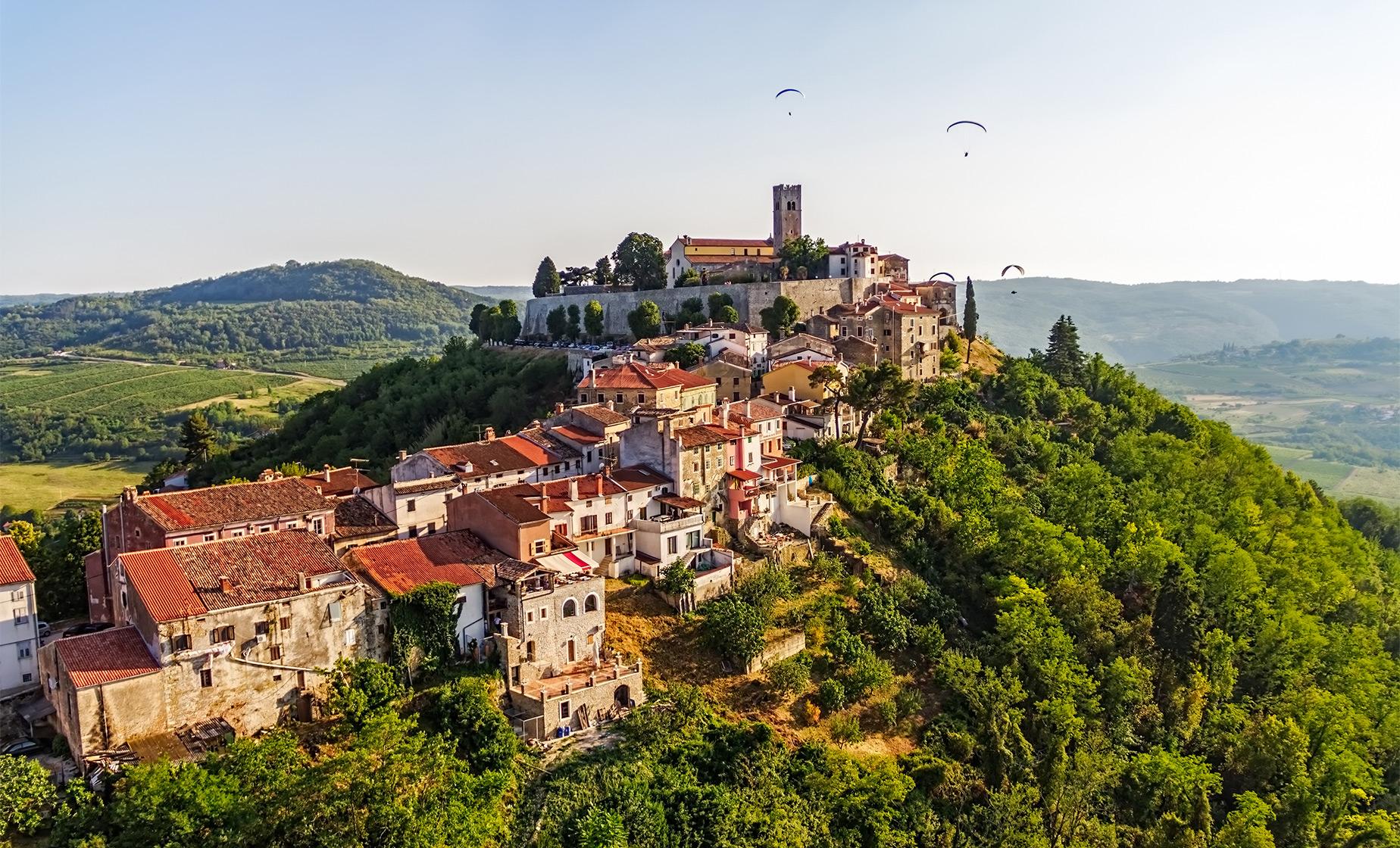Highlights of Istria-Hum, Motovun and Labin

- Experience Istria's smallest city, Hum, recognized by the Guinness Book of Records, and indulge in their unique mistletoe-spiced brandy.
- Step back in time with the historic towns of Motovun and Roc, showcasing stunning Venetian architecture and captivating 11th-century charm.
- Participate in an ancient tradition in Hum, where votes are carved into wooden sticks to elect the village superior.
- Revel in the gastronomic delights of Istria's exquisite wines and abundant truffles, paired with old-world ""konobe"" restaurants in the vineyard-surrounded Motovun.
- Explore Labin, the city of artists, with its 30 resident artists, multiple galleries and annual summer Art Republic event.
Highlights of Istria-Hum, Motovun and Labin
Situated near the center of Istria, Hum is recognized by the Guinness Book of Records as the smallest city in the world with a population of only 21.
According to the legend, Hum was created by giants using leftover stones from the building of towns dotting the river running through the Mirna Valley. This central Istria valley includes the beautiful towns of Motovun, known for its 14th-century Venetian architecture, the historic 11th-century town of Roc, and the small olive oil producing town of Bale.
Throughout the centuries, Hum has maintained the old ritual "election of the perfect," for a year when all the men from the parish gather at the Municipal Loggia (town hall) to elect the village superior by carving their votes into a wooden stick. Apart from being famous for being the smallest city in the world, Hum is renowned for their biska, a brandy spiced with mistletoe and made according to an ancient local recipe. Every year at the end of October, Hum hosts the Festival of Istrian Grappa bringing together Istrian producers and scores of fans to taste and enjoy the homemade brandy of the region.
In the north of Istria, high above the Mirna River lies the village of Motovun. The most famous and beautiful of Istria's medieval towns, the fascinating site of Motovun is a characteristic symbol of the incredible interior region.
The bell tower, a 13th-century Romanesque-Gothic with a crenulated crown, dominates the center of the historic town from its position adjacent to the 17th-century Church of St. Stephen. The central square is home to the Romanesque Municipal Palace, Istria's most prominent secular building. Motovun's forest stretches down to the Mirna River valley and is widely suitable for truffles, the alleged aphrodisiac malodorous fungus which grows underground. These white truffles of Istria are in season from September to December and are said to be as good as even the best French and Italian truffles. Vineyards surround the town producing the grapes used in Istria's most exquisite wines, the red Teran and the white Malvasia; accompanied by grand old-word "konobe" restaurants.
The town of Labin, developed from the site of the Roman settlement of Albonathe and known as the city of artists, is an old medieval town located on a 320 m (1,049 feet) high hill. The Old Labin is the best-preserved acropolis in Istria and home to many cultural and historical monuments. Some 30 artists are living and working in Labin, and several galleries call Labin their home. Sculpture Park, in nearby Dubrova, has been home to the International Sculptors Symposium for the past 40 years. In the summer, the old center is taken over by the Art Republic, a combination of music, performance and fine arts. Accompanying the arts, the 16th -century town gates of St. Flor lead wanderers to the old town where a 17th-century tower offers a magnificent view.
Be the first to review this item
Our Port Books are exclusive guides that provide detailed information curated by our tour directors and local representatives, including:
- Port History
- Maps
- Shopping Recommendations
- Weather
- Highlights, Attractions, and Points of Interests
- Recommended Clothing
- Restaurants, Food & Beverage
- Important Tourist Information - Local Currency, Safety, Transportation, and more!

 4.7 / 5
4.7 / 5